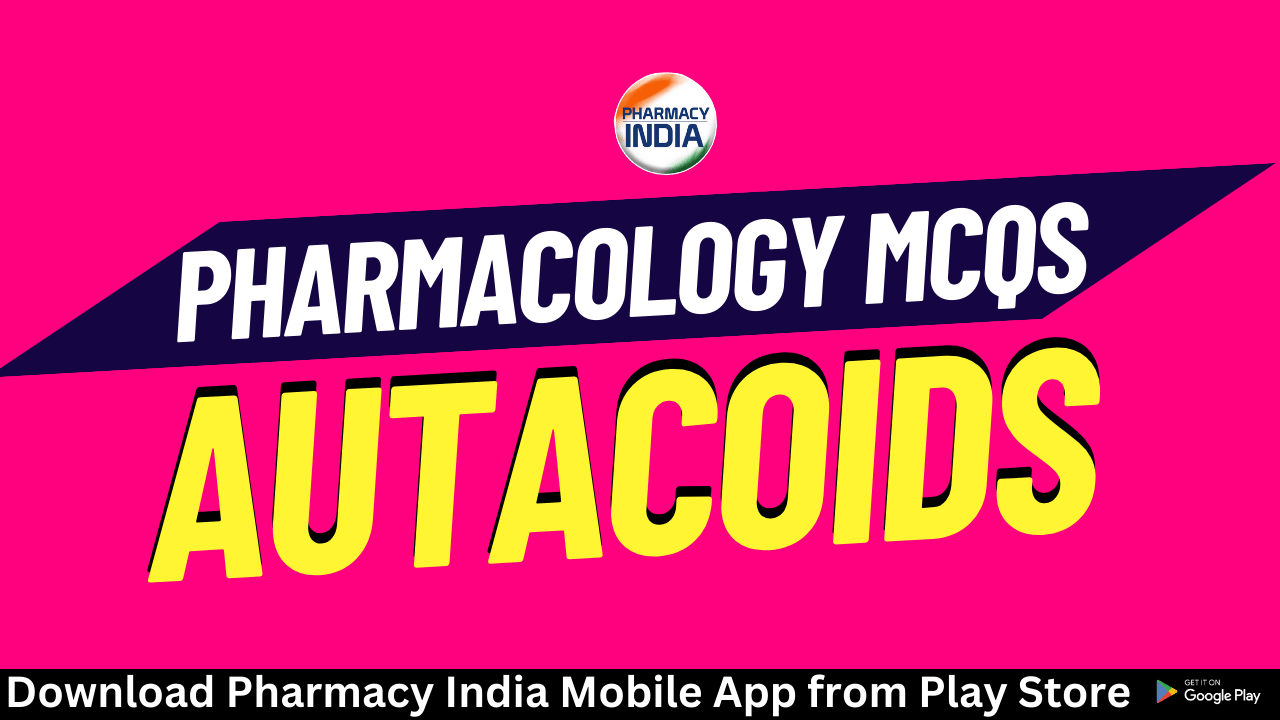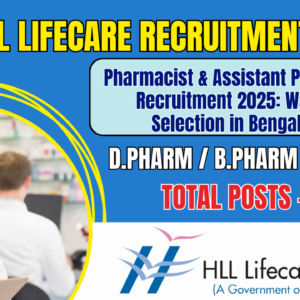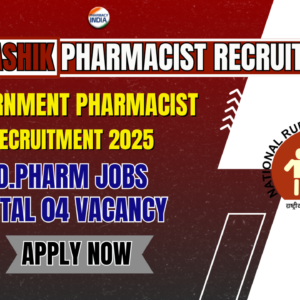Welcome to Pharmacy India, your go-to destination for comprehensive and high-quality Pharmacology Autacoids Multiple Choice Questions (MCQs)! We are excited to offer a rich repository of MCQs tailored for pharmacy professionals, students, and enthusiasts seeking to enhance their knowledge in the dynamic field of pharmacology.

Our carefully curated Pharmacology Autacoids MCQs cover a spectrum of topics, providing a valuable resource for individuals preparing for exams, assessments, or simply looking to deepen their understanding of drug interactions, mechanisms, and therapeutic applications.
HISTAMINICS, ANTIHISTAMINICS and 5HT
1. Which is not a 2nd generation antihistaminic agent
(a) Cetirizine
(b) Cyclizine
(c) Loratidine
(d) Fexofenadine
2. A peptide that causes increased capillary permeability and edema is
(a) Histamine
(b) Angiotensin II
(c) Bradykinin
(d) Renin
3. Ergometrine is commonly used for
(a) PostPartum Hemorrhage
(b) To shorten 2nd stage of labour
(c) Dysmenorrhea
(d) Toxemia of pregnancy
4. The H3 receptor agonist exhibits all of the following actions EXCEPT
(a) Inhibition of H1 receptor induced wakefulness
(b) Increase in H1 mediated gastrin secretion
(c) Inhibition of H1 mediated bronchoconstriction
(d) Negative chronotropic effect on atria
5. Second generation antihistaminic used in allergic rhinitis are
(a) Azelastine
(b) Fexofenadine
(c) Desloratidine
(d) All of the above
6. All of the following actions of histamine are mediated through H1 receptors except
(a) Release of EDRF from vascular endothelium resulting in vasodilation
(b) Direct action on vascular smooth muscle causing vasodilation
(c) Bronchoconstriction
(d) Release of catecholamines from adrenal medulla
7. Which of the following drugs can cause hypotension by release of histamine from mast cells
(a) Aspirin
(b) Procaine
(c) Morphine
(d) Sulfadiazine
8. All of the following antihistaminic agents lack anticholinergic property except
(a) Promethazine
(b) Astemizole
(c) Levocetirizine
(d) Loratidine
9. The drug possessing antagonistic action at histamine, serotonin and muscarinic receptors is
(a) Promethazine
(b) Terfenadine
(c) Cyproheptadine
(d) Hydroxyzine
10. Agents which have limited activity on local area is termed as
(a) Autacoids
(b) Hormones
(c) Enzymes
(d) All of the above
11. Histamine is released from
(a) Parietal cell
(b) Mast cell
(c) Goblet cell
(d) All of the above
12. Which of the following is location of non-mast cell histamine
(a) Brain
(b) Epidermis
(c) Gastric mucosa
(d) All of the above
13. Histamine effect on bronchial smooth muscle
(a) Contraction
(b) Relaxation
(c) No effect
(d) Contraction and then Relaxation
14. Histamine affect which receptor to stimulate gastric acid secretion
(a) H1
(b) H2
(c) H3
(d) H4
15. Which of the following drug does not produce drowsiness as compare to 1st generation antihistaminic drugs
(a) Cetirizine
(b) Levocetirizine
(c) Diphenhydramine
(d) Both A and B
16. Antivertigo drug which modulates calcium channels and has prominent labyrinthine suppressant property is
(a) Cyproheptadine
(b) Cinnarizine
(c) Clemastine
(d) Cetirizine
17. Ketoconazole should not be given to a patient being treated with astemizole because
(a) Ketoconazole induces the metabolism of astemizole
(b) Dangerous ventricular arrhythmias can occur
(c) Astemizole inhibits the metabolism of ketoconazole
(d) Astemizole antagonizes the antifungal action of ketoconazole
18. True statement about fexofenadine is
(a) It undergoes high first pass metabolism in liver
(b) Terfenadine is an active metabolite of this drug
(c) It does not block cardiac K+ channels
(d) It has high affinity for central H1 receptors
19. H1 antihistaminic having best topical activity is
(a) Loratadine
(b) Cetrizine
(c) Astemizole
(d) Azelastine
20. Histamine exerts the following actions EXCEPT
(a) Dilatation of large blood vessels
(b) Dilatation of small blood vessels
(c) Stimulation of isolated Guinea pig heart
(d) Itching
21. All 5HT receptors are heptahelical serpentine receptors except
(a) 5HT1
(b) 5HT2
(c) 5HT3
(d) 5HT4
22. Antihistaminic used in motion sickness is
(a) Cetirizine
(b) Meclizine
(c) Diphenhydramine
(d) Fexofenadine
23. Most important receptor involved in chemotherapy induced vomiting is
(a) Histamine H1 receptor
(b) Serotonin 5HT3 receptor
(c) Dopamine D2 receptor
(d) Opioid µ receptor
24. Selective 5HT4 agonist useful in gastroesophageal reflux disease and lacking arrhythmogenic property is
(a) Buspirone
(b) Sumatriptan
(c) Cisapride
(d) Tegaserod
25. The nonsedative antihistamines are all EXCEPT one
(a) Fexofenadine
(b) Desloratidine
(c) Levocetirizine
(d) Cinnarizine
26. Ketanserin is
(a) 5HT1B antagonist
(b) 5HT2 antagonist
(c) 5HT1A agonist
(d) 5HT1D antagonist
27. The long acting classical H1 antihistaminic include which of the following
(a) Chlorpheniramine
(b) Astemizole
(c) Cetrizine
(d) Clemastine
28. Which of the following drugs, if given with terfenadine, can cause ventricular arrhythmias
(a) Ketoconazole
(b) Griseofulvin
(c) Ampicillin
(d) Sparfloxacin
29. One of the following is not a 5HT receptor antagonist
(a) Ketanserin
(b) Lanreotide
(c) Methysergide
(d) Tropisetron
30. Antihistaminic used in motion sickness is
(a) Cetirizine
(b) Meclizine
(c) Diphenhydramine
(d) Fexofenadine
31. Select the antihistaminic which modulates calcium channels and has prominent labyrinthine suppressant property
(a) Cyproheptadine
(b) Cinnarizine
(c) Clemastine
(d) Cetirizine
32. 5HT antagonist is
(a) Clozapine
(b) Ketanserin
(c) Sumatriptan
(d) Cisapride
33. Which of the following serotonergic receptors is an autoreceptor
(a) 5HT1A
(b) 5HT2A
(c) 5HT3
(d) 5HT4
34. Which of the following anxiolytic is a 5HT 1A agonist
(a) Benzodiazepines
(b) Hydroxyzine
(c) Buspirone
(d) Sertaline
35. Which one is not an action of Serotonin 5HT
(a) increases motility
(b) Contract of smooth muscles
(c) Increase of Urine
(d) Increases capillary pressure & permeability
36. Which one of the following the 5HT distribute to
(a) A neurotransmitter, in midbrain
(b) A smooth muscles
(c) Pancreas
(d) Thyroid glands
37. Which of the following statement is incorrect for 5 – HT1
(a) It plays a major role in regulation of GI motility
(b) It promotes aggregation of platelets
(c) It acts only as peripheral neuro transmitter
(d) It acts as mediator in reaction to scorpion bite
38. Granisetron is used in
(a) Motion sickness
(b) Sedation in endoscopy
(c) Chemotherapy induced nausea and vomiting
(d) Gastrooesophageal reflux disease
39. Methysergide used as drug of choice in migraine but not now because
(a) MI
(b) Peptic ulcer
(c) Pulmonary fibrosis
(d) Arrhythmias
Ergot Alkaloids and Migraine
40. Drugs used in prophylaxis of migraine are all EXCEPT
(a) Propranolol
(b) Flunarizine
(c) Topiramate
(d) Levetiracetam
41. All of the following can be used for prophylaxis of migraine except
(a) Sumatriptan
(b) Valproate
(c) Propranolol
(d) Topiramate
42. Drugs used for prophylaxis of migraine is/are
(a) Flunarizine
(b) Beta blocker
(c) Sodium valproate
(d) All of the above
43. Which of the following is most useful for reversing severe ergot induced vasospasm
(a) Ergotamine
(b) Methysergide
(c) Nitroprusside
(d) Phenoxybenzamine
44. Selective 5HT1B/1D receptor agonist useful in acute migraine is
(a) Buspirone
(b) Ondansetron
(c) Frovatriptan
(d) Ketanserin
45. Ergot alkaloid commonly used to prevent postpartum haemorrhage is
(a) Methyl ergometrine
(b) Ergotamine
(c) Dihydroergotamine
(d) Dihydroergotoxine
46. Choose the correct statement about sumatriptan
(a) It activates 5HT1A receptors
(b) It tends to suppress both pain and vomiting in migraine
(c) It does not carry risk of precipitating coronary vasospasm
(d) It is combined with ergotamine for the treatment of severe migraine
47. Drug of choice in acute severe migraine is
(a) Ergotamine
(b) Sumatriptan
(c) Dihydroergotamine
(d) Propranolol
48. Select the ergot compound which is primarily used for dementia
(a) Bromocriptine
(b) Ergotamine
(c) Codergocrine
(d) Methysergide
49. The ‘amine’ ergot alkaloid differs from ‘amino acid’ ergot alkaloid in that it has
(a) High oral bioavailability
(b) Better CNS penetrability
(c) Weaker oxytocic action
(d) Strong anti5HT action
50. Methyl ergometrine is used in the prophylaxis of
(a) Migraine
(b) Postpartum haemorrhage
(c) PIH
(d) None of the above
51. Select the correct statement in relation to drug therapy of migraine
(a) Simple analgesics like paracetamol are ineffective in migraine
(b) Ergot alkaloids are used for prophylaxis as well as treatment of migraine attacks
(c) Use of ergot alkaloids is restricted to severe or resistant cases
(d) Ergot alkaloids should be given till 24 hours after an attack has subsided
52. The non-steroidal anti-inflammatory drugs are more effective in migraine
(a) Without aura
(b) With aura
(c) Than ergotamine
(d) When combined with propranolol
53. Ergotamine relieves migraine by
(a) Blocking vascular α adrenergic receptors
(b) Blocking vascular 5HT2 receptors
(c) Dilating cranial arteriovenous shunt channels
(d) Constricting cranial vessels and reducing perivascular neurogenic inflammation
54. Prophylactic therapy of migraine
(a) Is recommended in all cases
(b) Benefits upto 70% patients of moderate to severe migraine
(c) Needs to be continued lifelong without interruption
(d) Reduces the severity but increases the frequency of migraine attacks
Eicosanoids and NSAIDs
55. Which of the following is/are example of eicosanoid
(a) Prostaglandin
(b) Prostacyclin
(c) Thromboxane
(d) All of the above
56. Paracetamol generally affect which of the following type of COX
(a) COX1
(b) COX2
(c) COX3
(d) None of the above
57. Angiotensinogen is synthesized in
(a) Liver
(b) Kidney
(c) Brain
(d) Heart
58. Following are uses of prostaglandins EXCEPT
(a) First trimester of pregnancy
(b) Cervical ripening during labour
(c) Postpartum haemorrhage
(d) Dysmenorrhoea
59. Which of the prostaglandin analogue is used in wide angle glaucoma
(a) PGE1
(b) PGF2alpha
(c) PGE2
(d) PGD2
60. Which of the following drugs inhibit an enzyme in the prostaglandin synthesis
(a) Alteplase
(b) Aspirin
(c) Aprotinin
(d) Aminocaproic acid
61. Which of the prostaglandin analogue is used in NSAID induced gastritis
(a) PGE1
(b) PGF2alpha
(c) PGE2
(d) PGD2
62. Substance P has following number of amino acids
(a) 10
(b) 11
(c) 12
(d) 13
63. NSAID drugs have following action
(a) Analgesic
(b) AntiPyretic
(c) AntiInflammatory
(d) All of the above
64. Which of the following is side effect of NSAID
(a) Gastric erosion
(b) Peptic ulcer
(c) Initiation of bleeding
(d) All of the above
65. Acetaminophen is also known as
(a) Paracetamol
(b) Aceclofenac
(c) Nimesulide
(d) Aspirin
66. The side effect of NSAID in most of the case is generally associated with
(a) Inhibition of COX1
(b) Inhibition of COX2
(c) Inhibition of COX3
(d) All of the above
67. Aspirin inhibits which of the following enzymes
(a) Lipoprotein lipase
(b) Lipoxygenase
(c) Cyclooxygenase
(d) Phospholipase D
68. A patient on aspirin will have increase in
(a) Bleeding time
(b) Clotting time
(c) Prothrombin time
(d) Activated partial thromboplastin time
69. Misoprostol is a
(a) Prostaglandin E1 analogue
(b) Prostaglandin E2 analogue
(c) Prostaglandin antagonist
(d) Antiprogestin
70. All of the following are correct statements EXCEPT
(a) PGs and leukotrienes are derived from arachidonic acid
(b) Cox II is induced by cytokines at the site of inflammation
(c) Cox I is an inducible enzyme
(d) Leukotrienes cause smooth muscle contraction
71. Which NSAID undergoes enterohepatic circulation
(a) Phenylbutazone
(b) Aspirin
(c) Ibuprofen
(d) Piroxicam
72. Therapeutic uses of prostaglandin El include all of the following EXCEPT
(a) Medical termination of pregnancy
(b) Impotence
(c) Primary pulmonary hypertension
(d) Maintenance of patent ductus arteriosus
73. True statements about TXA2 is
(a) It is formed in platelets
(b) It is formed from PGG2/H2
(c) It is prothrombotic
(d) All of the above
74. COX pathway is inhibited by
(a) Aspirin
(b) Ondansetron
(c) Betamethasone
(d) Calcitonin
75. Which of the following is/are cyclooxygenase inhibitors
(a) Naproxen
(b) Prednisolone
(c) Sumatriptan
(d) Betamethasone
76. Which of the following drugs inhibit platelet cyclooxygenase reversibly
(a) Alprostadil
(b) Aspirin
(c) Ibuprofen
(d) Prednisolone
77. Which of the following is a component of slow reacting substance of anaphylaxis (SRS(A)
(a) LTC4
(b) LTB4
(c) Misoprostol
(d) Prostacyclin
78. Which of the following drugs reduces the activity of phospholipase A2
(a) Alprostadil
(b) Aspirin
(c) Ibuprofen
(d) Prednisolone
79. The chief advantage of ketorolac over aspirin is that the former
(a) Can be combined more safely with an opioid such as codeine
(b) Does not prolong bleeding time
(c) Is available in a parenteral formulation that can be used intramuscularly or intravenously
(d) Is less likely to cause acute renal failure in patients with preexisting renal impairment
80. Irreversible inhibitor of cyclooxygenase is
(a) Aspirin
(b) Phenylbutazone
(c) Indomethacin
(d) Piroxicam
81. Prostaglandin E2 analogs can be used for all of the following conditions except
(a) Treatment of patent ductus arteriosus
(b) Treatment of bronchial asthma
(c) Cervical priming
(d) Treatment of NSAID induced peptic ulcer
82. Aspirin in low doses produces long lasting inhibition of platelet cyclooxygenase because
(a) Platelet contain low quantity of COX
(b) Platelets cannot synthesize fresh COX molecules
(c) Platelets bind aspirin with high affinity
(d) Platelet COX is inducible
83. Zafirlukast acts by blocking the action of
(a) Prostacyclin
(b) Platelet activating factor
(c) Leukotriene B4
(d) Leukotriene C4/D4
84. True statement about cyclooxygenase –2 is
(a) It is not inhibited by indomethacin
(b) It is inducible
(c) It generates cytoprotective prostaglandins in gastric mucosa
(d) It is found only in fetal tissues
85. All of the following effects are produced by inhibitors of prostaglandin synthesis except
(a) Prolongation of bleeding time
(b) Prolongation of prothrombin time
(c) Prolongation of labour
(d) Gastric mucosal damage
86. All of the following actions of aspirin are mediated by inhibition of prostaglandin synthesis except
(a) Analgesia
(b) Closure of patent ductus arteriosus
(c) Hyperventilation
(d) Bleeding tendency
87. Use of aspirin in a diabetic patient can result in
(a) Hyperglycemia
(b) Hypoglycemia
(c) Ketoacidosis
(d) Alkalosis
88. The plasma half-life of aspirin
(a) Is independent of dose
(b) Is longer for anti-inflammatory doses compared to that for analgesic dose
(c) Is shorter for anti-inflammatory doses compared to that for analgesic dose
(d) Can be increased by alkalinizing the urine
89. Analgesic that itself can cause headache as a side effect is
(a) Indomethacin
(b) Mephenamic acid
(c) Piroxicam
(d) Aspirin
90. Rofecoxib as compared to indomethacin is
(a) Less likely to cause gastric ulcer and their complications
(b) Likely to be more effective in rheumatoid arthritis
(c) Not likely to produce renal complications
(d) All of the above
91. NSAID proposed to be acting via inhibition of COX3 is
(a) Nimesulide
(b) Paracetamol
(c) Ketorolac
(d) Rofecoxib
92. Which of the following NSAIDs has been approved for use in children
(a) Indomethacin
(b) Ibuprofen
(c) Ketorolac
(d) Piroxicam
93. Among NSAIDs aspirin is unique because it
(a) Irreversibly inhibits its target enzyme
(b) Reduces the risk of colon cancer
(c) Reduces fever
(d) Selectively inhibits COX2 enzyme
94. The antidote of choice in paracetamol poisoning is
(a) Flumazenil
(b) Sodium bicarbonate
(c) Nacetylcysteine
(d) Methylene Blue
95. Prostaglandin useful for the prevention of duodenal ulcer is
(a) Dinoprost
(b) Misoprostol
(c) Alprostadil
(d) Carboprost
96. Prostaglandin inhibiting action of aspirin is useful in the treatment of all of the following conditions, EXCEPT
(a) Analgesia and antipyresis
(b) Closure of ductus arteriosus
(c) Uricosuria
(d) Anti-inflammatory and anti-platelet aggregation
97. Which of the following drugs inhibit an enzyme in the prostaglandin synthesis
(a) Aminocaproic acid
(b) Aspirin
(c) Aprotinin
(d) Alteplase
98. Misoprostol, a prostaglandin analogue is useful as
(a) Uterine relaxant
(b) Antiulcer
(c) Bronchodilator
(d) Vasodilator
99. Drug commonly causing analgesic nephropathy is
(a) Aspirin
(b) Ibuprofen
(c) Phenacetin
(d) Phenylbutazone
100. Which one of the following is aspirin
(a) Methyl salicylate
(b) Paraaminobenzoic acid
(c) Paraaminosalicylic acid
(d) Acetyl salicylic acid
101. True about COX2 are all EXCEPT
(a) It is constitutionally expressed on some cell surfaces
(b) Activation of COX2 leads to ulcer protective effect on gastric mucosa
(c) Induced at the site of inflammation
(d) It is utilized in generation of eicosanoids with a ring structure
102. Which of the following is non-opioid analgesic and does not inhibit prostaglandin synthesis
(a) Nefopam
(b) Tenoxicam
(c) Ketorolac
(d) Piroxicam
103. All are true about Reye’s Syndrome Except
(a) Hepatic encephalopathy
(b) Seen with ampicillin therapy
(c) Fever and rash
(d) Viral associated
104. Ibuprofen acts on
(a) Lipoxygenase pathway
(b) Cyclooxygenase pathway
(c) Kinin system
(d) Serotonin system
105. Which of the following prostaglandin analogues is used in glaucoma
(a) Misoprostol
(b) Latanoprost
(c) Enprostil
(d) Rioprostil
106. Cycloxygenase enzyme is not inhibited by
(a) Aspirin
(b) Warfarin
(c) Phenylbutazone
(d) Diclofenac
107. Which prostaglandin helps in cervical ripening
(a) PGI2
(b) PGF2
(c) PGE2
(d) PGD2
108. Rofecoxib was withdrawn due to
(a) Ischemic heart disease
(b) Renal complication
(c) Liver adenoma
(d) Gastric ulcer
109. Which of the following statements is true of ketorolac
(a) Has potent anti-inflammatory activity
(b) Its analgesic efficacy is equal to morphine in postoperative pain
(c) Is used as preanaesthetic analgesic
(d) It interacts with opioid receptor
110. Use of aspirin in children with viral disease is associated with
(a) Metabolic acidosis
(b) Reye’s syndrome
(c) Renal tubular acidosis
(d) Fixed drug eruption
Rheumatoid Arthritis and Gout
111. Which of the following drugs cause oligospermia
(a) Leflunomide
(b) Penicillamine
(c) Methotrexate
(d) Sulfasalazine
112. Allopurinol prevents conversion of
(a) Hypoxanthine to xanthine
(b) Xanthine to hypoxanthine
(c) Hypoxanthine to I.M.P.
(d) Xanthine to uronic acid
113. Which of the following disease modifying antirheumatoid drugs is a prodrug
(a) Etanercept
(b) Nimesulide
(c) Sulfasalazine
(d) Colchicine
114. All of the following drugs can produce hyperuricemia except
(a) Ethambutol
(b) Pyrazinamide
(c) Sulfinpyrazone
(d) Hydrochlorothiazide
115. Gout is an example of
(a) Metabolic acidosis
(b) Metabolic disorder
(c) Genetic disorder
(d) None of the above
116. The cause of gout is
(a) Over synthesis of uric acid
(b) Over synthesis of insulin
(c) Saturation of uric acid in blood
(d) Both A and C
117. Agent which increase elimination of uric acid via urine is called as
(a) Uricosouric agents
(b) Purine synthesis inhibitor
(c) Leukocyte inhibitor
(d) Antidiuretic
118. Colchicine MOA is
(a) Inhibition of Leukocyte migration
(b) Inhibition of Phagocytosis
(c) Inhibition of Xanthine oxidase
(d) Both A and B
119. Osteoarthritis is result of
(a) Physical work load
(b) Autoimmune disorder
(c) Genetic disorder
(d) Metabolic disorder
120. Rheumatic Arthritis cause is
(a) Autoimmune disorders
(b) Injury
(c) Genetics
(d) None of the above
121. Which of the following disease modifying anti-rheumatoid drugs is a prodrug
(a) Etanercept
(b) Nimesulide
(c) Sulfasalazine
(d) Colchicine
122. All of the following drugs can produce hyperuricemia except
(a) Ethambutol
(b) Pyrazinamide
(c) Sulfinpyrazone
(d) Hydrochlorothiazide
123. Drug of choice for acute gout is
(a) Colchicine
(b) Indomethacin
(c) Allopurinol
(d) Dexamethasone
124. Most common dose limiting adverse effect of colchicine is
(a) Sedation
(b) Kidney damage
(c) Diarrhea
(d) Muscle paralysis
125. Which of the following drugs is useful in chronic gout but is not a uricosuric agent
(a) Probenecid
(b) Phenylbutazone
(c) Sulfinpyrazone
(d) Allopurinol
126. Allopurinol is useful in all of the following conditions EXCEPT
(a) Cancer chemotherapy induced hyperuricemia
(b) Hydrochlorothiazide induced hyperuricemia
(c) Acute gouty arthritis
(d) Kala –azar
127. Rasburicase is a newer drug used in gout. It act by
(a) Decreasing urate synthesis
(b) Increasing urate oxidation
(c) Decreasing intestinal absorption of uric acid
(d) Increasing renal excretion of uric acid
128. A drug that is effective for rheumatoid arthritis but is not appropriate for osteoarthritis is
(a) Acetaminophen
(b) Infliximab
(c) Keterolac
(d) Rofecoxib
129. Which of the following is a DMARD
(a) Desferrioxamine
(b) Penicillamine
(c) Succimer
(d) Dimercaprol
130. Which of the following increases uric acid excretion
(a) Allopurinol
(b) Aspirin
(c) Colchicine
(d) Probenecid
131. Which of the following drugs is useful in acute attack of gout
(a) Furosemide
(b) Sulfinpyrazone
(c) Allopurinol
(d) Piroxicam
132. Allopurinol potentiates the action of
(a) Corticosteroids
(b) Probenecid
(c) 6-Mercaptopurine
(d) Ampicillin
133. Probenecid interacts with
(a) Streptomycin
(b) Ampicillin
(c) Vancomycin
(d) Erythromycin
134. Drug useful for gout
(a) Pyrazinamide
(b) Rifampicin
(c) Allopurinol
(d) Naloxone
135. Loading dose of leflunomide in rheumatoid arthritis is
(a) 20 mg
(b) 10 mg
(c) 100 mg
(d) 400 mg
136. Leflunomide is used in the treatment of
(a) Rheumatoid arthritis
(b) Dermatomyositis
(c) Bony metastasis
(d) Postmenopausal osteoporosis
137. Which of the following disease modifying antirheumatic drugs (DMARDs) is the drug of first choice
(a) Methotrexate
(b) Gold compounds
(c) Dpenicillamine
(d) Anakinra
Miscellaneous
138. Most common cause of Mobius syndrome is use of which of the following drug in pregnancy
(a) Misoprostol
(b) Thalidomide
(c) Methotrexate
(d) Dinoprostone
139. Which of the following agent is not used for treatment of erectile dysfunction
(a) PGE2
(b) Vardenafil
(c) Phenylephrine
(d) Alprostadil
140. Which of the following drugs has covalent interaction with its target
(a) Aspirin
(b) Penicillin
(c) Nitric oxide
(d) Bosentan
141. Which of the following is used to treat severe pulmonary hypertension
(a) Angiotensin I
(b) Omapatrilat
(c) Bosentan
(d) Endothelin
142. The primary endogenous substrate for nitric oxide synthase (NOS) is
(a) Citrulline
(b) Arginine
(c) Heme
(d) Methionine
143. Which of the following NSAID has good tissue penetrability with concentration in synovial fluid
(a) Ketorolac
(b) Diclofenac sodium
(c) Sulindac
(d) Piroxicam
144. Best drug for chronic gout in patient with renal impairment is
(a) Naproxen
(b) Probenecid
(c) Allopurinol
(d) Sulfinpyrazone
145. Alprostadil is not used for
(a) Erectile dysfunction
(b) Pulmonary hypertension
(c) Patent ductus arteriosus
(d) Critical limb ischemia
146. Ergometrine is not used for initiation of labour because
(a) Slow onset of action
(b) Foetal hypoxia
(c) Increases blood pressure
(d) Act on D2 receptors to cause vomiting
147. NSAID given in once daily dose is
(a) Naproxen
(b) Ketoralac
(c) Piroxicam
(d) Paracetamol
148. Most commonly used drug for prophylaxis of migraine is
(a) Sumatriptan
(b) Propranolol
(c) Valproate
(d) Flunarizine
MORE PHARMACOLOGY MCQS
| Introduction to Pharmacology | Click Here |
| Autonomic Nervous System | Click Here |







One thought on “Pharmacology MCQs – Autacoids (B. Pharma/ D. Pharma/ GPAT/ Pharmacist/ DI)”